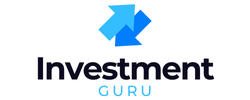For many entrepreneurs, hitting $1 million in revenue is the golden milestone—a point where the dream of financial freedom feels real and a small business finally proves it has what it takes. But getting there? That’s another story.
The truth is, most small businesses struggle to break past six figures. So how can you scale, survive, and thrive to hit that seven-figure mark? Let’s quickly discuss how to make $1 million as a small business with practical, achievable strategies that have worked for countless entrepreneurs.
Table of Contents
The Mindset Shift to $1 Million

The journey to $1 million begins in your head. Many small business owners undervalue their time, undercharge their services, or think too small. Shifting from “how do I survive?” to “how do I scale?” is the mindset shift that unlocks growth.
Instead of asking “Can I?”, start asking “How can I?”.
Know Your Numbers
Revenue alone won’t make you rich—profit will. To hit $1M, you need clarity on:
- Revenue Targets: Break down $1M into achievable goals (e.g., $83,333 per month).
- Margins: Know your gross and net profit margins.
- Expenses: Keep overhead lean and track spending religiously.
- Cash Flow: Plan for dry seasons.
Businesses that scale quickly are obsessive about their numbers.
Choose the Right Business Model
Not all business models scale equally. Consider:
- Scalable: SaaS, e-commerce, online education, subscription services.
- Less Scalable: Sole-proprietor services without delegation.
If you want $1M, choose a model with built-in scalability or restructure your current one to reduce bottlenecks.
Product or Service Pricing Strategy
Too many small businesses underprice themselves. If you want $1M:
- Raise prices where possible.
- Offer tiered pricing for different customer budgets.
- Package services for higher perceived value.
You can’t scale to $1M on razor-thin margins—you must charge what you’re worth.
Create Recurring Revenue Streams

One-time sales make cash flow unpredictable. Recurring models—like subscriptions, memberships, or retainers—provide stability and scale faster.
Think:
- Monthly service packages
- Subscription boxes
- Software memberships
- Retainer contracts
Consistency compounds into millions.
The Power of Niche Markets
Broad businesses struggle to compete. Niches win. By narrowing your focus, you can:
- Become the go-to expert
- Charge premium prices
- Spend less on marketing
Example: Instead of being a “marketing agency,” become “a TikTok marketing agency for local restaurants.”
Marketing That Actually Works
Marketing is your growth engine. To reach $1M:
- Focus on digital marketing (SEO, email, social media ads).
- Use content marketing to build authority.
- Track ROI—double down on what works.
Marketing isn’t an expense. It’s an investment in growth.
Leverage Digital Tools and Automation

Time is money. Use technology to save both:
- CRM software to track leads.
- Automated email sequences for nurturing customers.
- Accounting software for financial management.
- AI tools for content, analytics, and customer support.
The less you do manually, the more you can focus on scaling.
Build a Strong Sales System
Sales is the lifeline of hitting $1M. Create:
- A repeatable sales script.
- Follow-up systems for leads.
- A CRM pipeline to track conversions.
A weak sales process kills growth faster than a bad product.
Hiring and Delegation
One person can’t do it all. To hit $1M:
- Hire strategically (sales, operations, marketing first).
- Delegate tasks outside your zone of genius.
- Build systems so employees can replicate results.
Scaling requires a team—don’t be the bottleneck.
Customer Retention and Loyalty

It’s 5x cheaper to keep a customer than to find a new one. Build loyalty through:
- Loyalty programs
- Exceptional customer service
- Consistent communication
A strong base of repeat customers creates a snowball effect toward $1M.
The Role of Networking and Partnerships
Partnerships can accelerate growth. Consider:
- Joint ventures
- Strategic alliances
- Referral partnerships
The right collaboration can double your reach overnight.
Scaling Beyond Local Boundaries
Most $1M small businesses don’t stay local. They:
- Expand into online markets
- Franchise their model
- Sell regionally or internationally
Think bigger than your ZIP code.
Cash Flow Management
Cash flow is king. Even profitable businesses fail without it. Manage by:
- Forecasting seasonal revenue dips
- Keeping a cash reserve
- Negotiating better payment terms
Healthy cash flow = sustainable growth.
Funding and Smart Investments
To scale faster, you may need funding. Options include:
- SBA loans
- Angel investors
- Crowdfunding
- Bootstrapping with profits
The key: don’t take on debt without a clear ROI strategy.
Case Studies of Million-Dollar Small Businesses
- Boutique Fitness Studio: Scaled via memberships and digital classes.
- E-commerce Brand: Hit $1M selling niche products online with targeted ads.
- Consulting Firm: Reached $1M by packaging services into high-ticket offers.
Proof: Ordinary entrepreneurs hit $1M with smart strategies.
Common Mistakes That Prevent Growth
- Underpricing services
- Not reinvesting profits
- Trying to serve everyone
- Neglecting marketing
- Avoiding delegation
Avoid these traps if you want to grow.
Measuring Progress Toward $1M
Track:
- Monthly revenue
- Profit margins
- Customer lifetime value
- Customer acquisition cost
Numbers don’t lie—they show whether you’re on track.
Exit Strategy Considerations
Once you hit $1M, what’s next? Options include:
- Selling your business
- Franchising your model
- Expanding into new markets
Planning an exit strategy makes your $1M journey more purposeful.
FAQs
How long does it take to make $1M in small business?
It depends, but most successful small businesses reach it in 3–7 years with a solid strategy.
Can a one-person business hit $1M?
Yes, but usually through digital products, consulting, or scalable models.
What’s the fastest way to scale?
Focus on marketing, sales systems, and recurring revenue streams.
Is profit more important than revenue?
Absolutely—$1M in revenue with low margins isn’t success. Profitability matters.
Do I need investors to hit $1M?
Not always—many small businesses bootstrap to seven figures.
What type of businesses reach $1M fastest?
Service-based businesses, e-commerce, and software startups often scale quickest.
Conclusion
Reaching $1M as a small business isn’t reserved for tech giants or massive franchises—it’s achievable for everyday entrepreneurs who combine the right mindset, systems, and strategy.
The path to seven figures starts with small, intentional steps: knowing your numbers, building strong sales, creating recurring revenue, and scaling smart.
Remember—every million-dollar company started small. The only difference between those who make it and those who don’t? Execution.
Suggested External Links:
- U.S. Small Business Administration
- Entrepreneur Magazine – Scaling Small Business
- Investopedia – Business Growth Strategies


